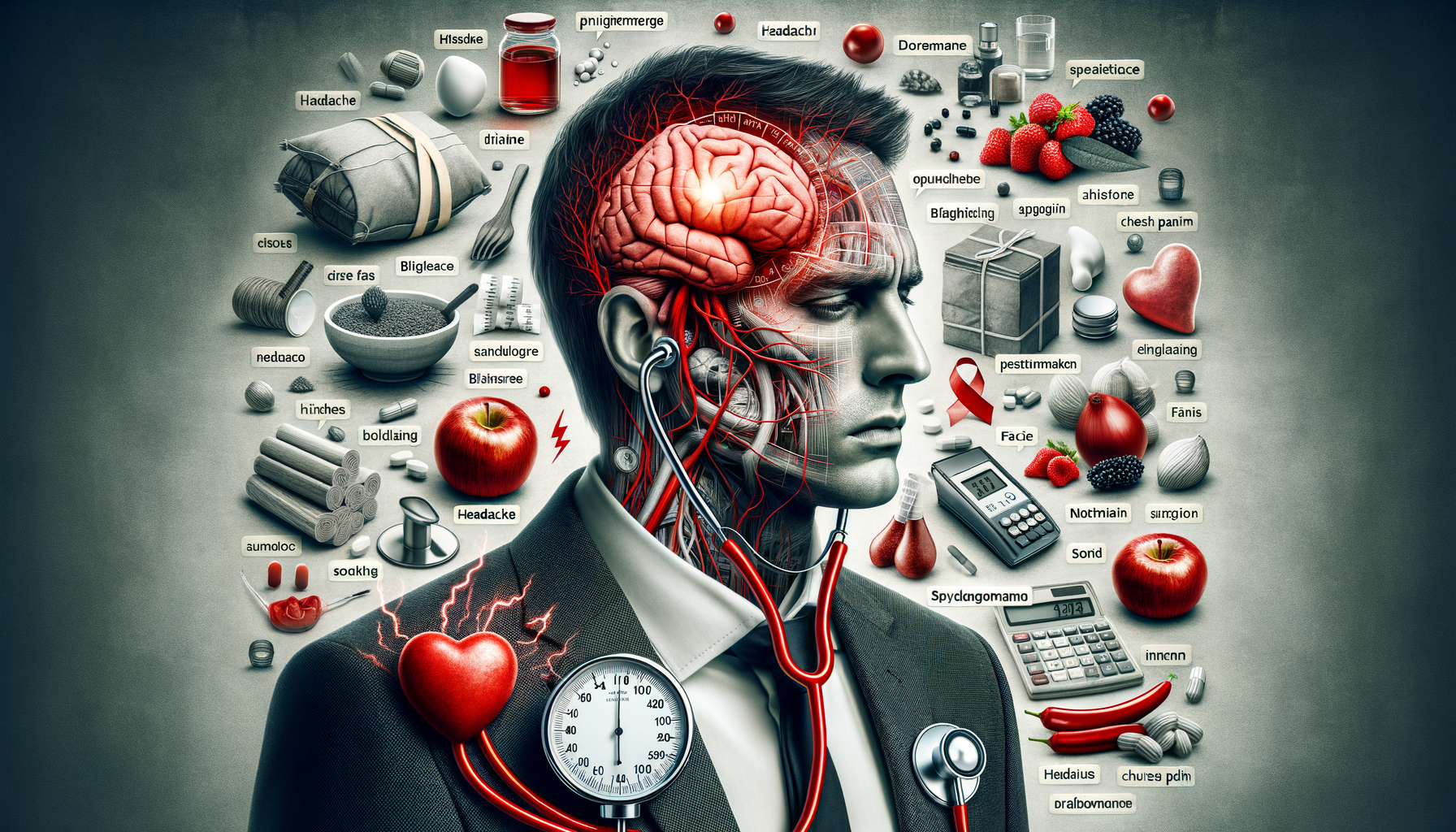Understanding High Blood Pressure
High blood pressure, also known as hypertension, is a common health condition that affects millions of people worldwide. Often referred to as a “silent killer,” high blood pressure can exist without obvious symptoms for years, quietly causing damage to the cardiovascular system. This makes it crucial to understand and recognize the potential symptoms that may indicate its presence. Hypertension is defined as having a systolic blood pressure reading of 130 mm Hg or higher, or a diastolic reading of 80 mm Hg or higher. While these numbers provide a clinical benchmark, the real challenge lies in identifying symptoms that are often subtle and easily overlooked.
Understanding the risk factors associated with high blood pressure is an essential part of recognizing its symptoms. Age, family history, obesity, lack of physical activity, and a diet high in salt and fat are all contributors to developing hypertension. Additionally, stress and chronic conditions such as kidney disease or diabetes can exacerbate the risk. By being aware of these factors, individuals can better monitor their health and seek medical advice when necessary.
Common Symptoms of High Blood Pressure
While high blood pressure can be asymptomatic, certain signs may indicate its presence. One of the most common symptoms is headaches, particularly if they occur frequently and are more intense than usual. These headaches are often described as pulsating and can be accompanied by feelings of pressure in the head.
Another symptom to watch for is dizziness or lightheadedness, which can occur when blood pressure spikes suddenly. This sensation may be accompanied by nausea or a feeling of unsteadiness. Vision problems, such as blurred or double vision, can also be a symptom, as high blood pressure can affect the blood vessels in the eyes.
Shortness of breath and chest pain are more severe symptoms that require immediate medical attention. These symptoms may indicate that high blood pressure has led to complications such as heart disease or heart attack. Additionally, nosebleeds, although less common, can occur due to the increased pressure on the blood vessels in the nose.
Uncommon Symptoms and Their Implications
In some cases, high blood pressure can present with less typical symptoms that are often mistaken for other conditions. Fatigue and confusion, for example, can be signs of hypertension, especially when they occur without a clear cause. These symptoms may result from the brain receiving inadequate blood flow due to narrowed or blocked arteries.
Another uncommon symptom is the presence of blood in the urine, which could indicate that high blood pressure is affecting the kidneys. The kidneys play a vital role in regulating blood pressure, and damage to these organs can exacerbate hypertension.
Facial flushing, characterized by a sudden redness or warmth in the face, can also occur. While it is not a direct symptom of high blood pressure, it can be triggered by factors that raise blood pressure temporarily, such as stress or physical exertion.
The Importance of Regular Monitoring
Given the subtlety of high blood pressure symptoms, regular monitoring is essential for early detection and management. Routine blood pressure checks can help identify hypertension before it leads to more severe health issues. Healthcare providers often recommend regular screenings, especially for individuals with risk factors such as age, family history, or lifestyle choices.
Home monitoring devices have made it easier for individuals to keep track of their blood pressure levels. These devices can provide valuable data that helps in managing the condition effectively. Keeping a log of blood pressure readings can assist healthcare providers in tailoring treatment plans to suit individual needs.
Moreover, understanding the importance of lifestyle changes in managing blood pressure cannot be overstated. Maintaining a healthy diet, engaging in regular physical activity, and managing stress are all crucial steps in controlling hypertension. These lifestyle modifications not only help in reducing blood pressure but also improve overall health and well-being.
Seeking Medical Advice and Treatment
Recognizing the symptoms of high blood pressure is only the first step. Seeking medical advice and treatment is crucial for managing the condition effectively. Healthcare providers can offer guidance on lifestyle changes and prescribe medications if necessary. Common medications include diuretics, ACE inhibitors, and beta-blockers, each working differently to lower blood pressure.
It is important to follow the prescribed treatment plan and attend regular follow-up appointments. These visits allow healthcare providers to monitor progress and make any necessary adjustments to the treatment plan. Additionally, discussing any side effects or concerns with medications is vital for ensuring effective management of hypertension.
Support from family and friends can also play a significant role in managing high blood pressure. Encouragement to maintain a healthy lifestyle and adhere to treatment plans can make a significant difference in achieving long-term health goals. By staying informed and proactive, individuals can effectively manage high blood pressure and reduce the risk of serious health complications.




Leave a Reply